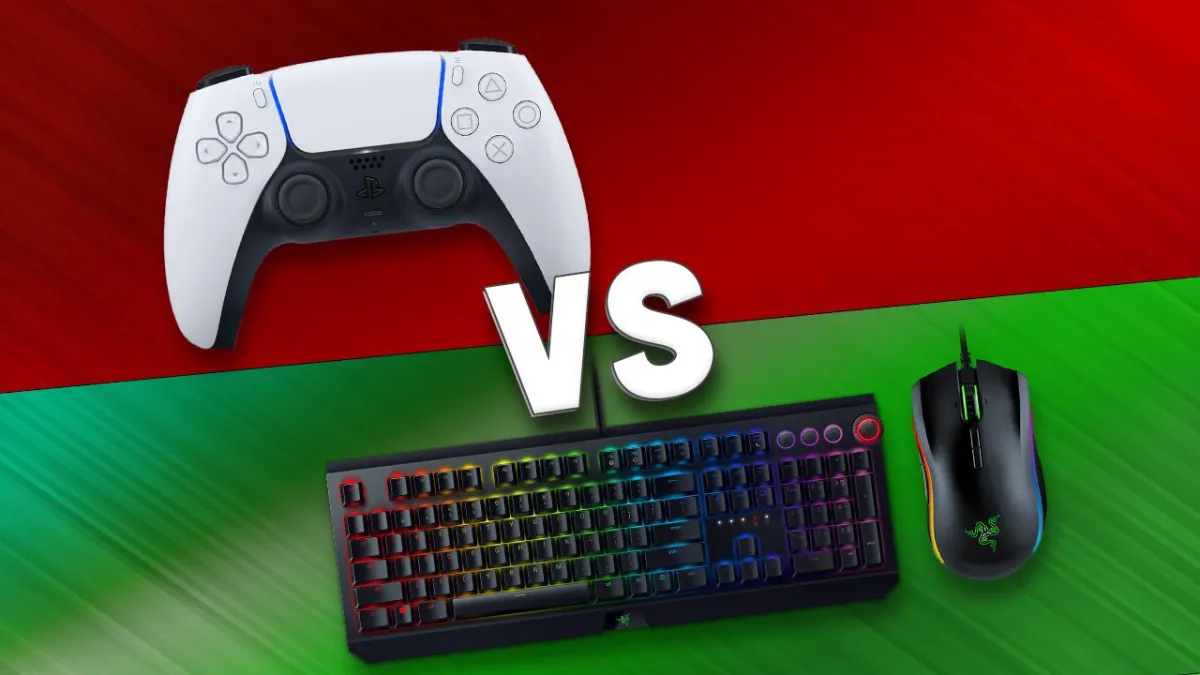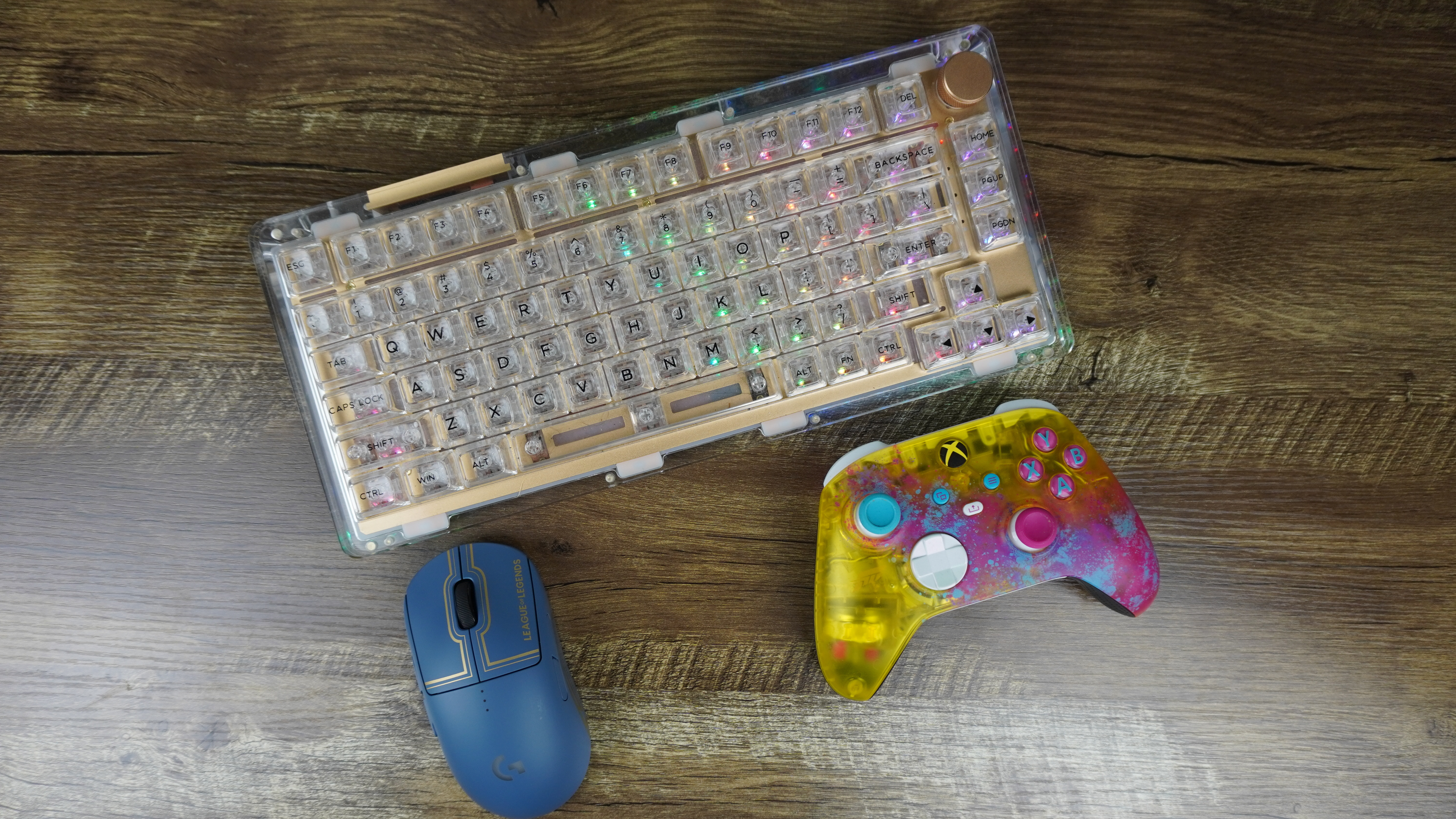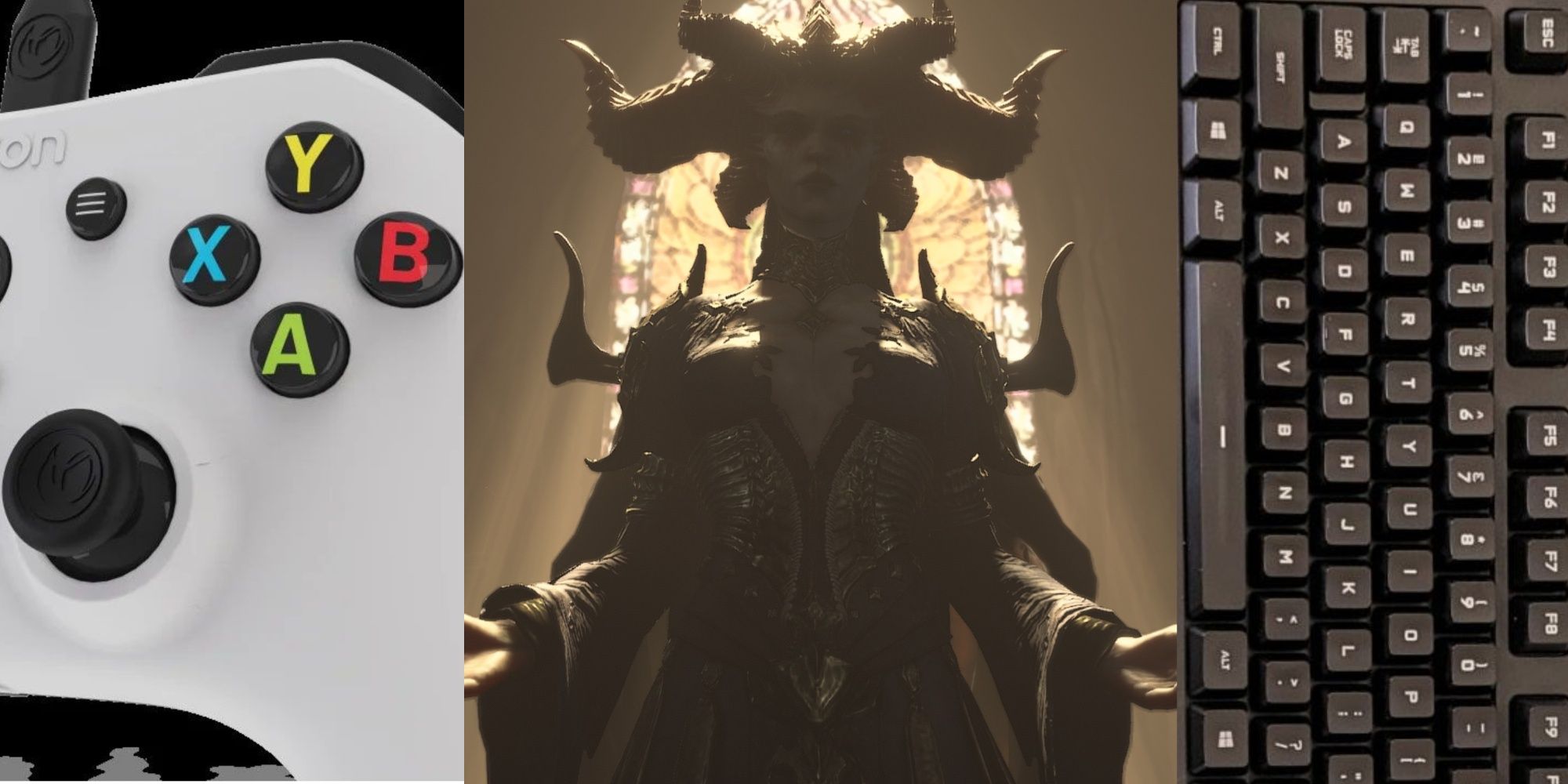The gaming community has long been engaged in a spirited debate regarding input methods, particularly the use of keyboards versus controllers. This discussion is rooted in the historical development of gaming, where both input devices have played pivotal roles in shaping player experiences. Initially, the keyboard emerged as the primary input device for PC gaming, providing players with a comprehensive range of commands and shortcuts suitable for complex gameplay. This was particularly evident in genres that required precision and quick reflexes, such as real-time strategy and first-person shooters. The keyboard’s design allowed for an extensive assortment of keys, catering well to the needs of dedicated gamers.
On the other hand, controllers gained prominence with the rise of console gaming, offering a user-friendly alternative that prioritized comfort and accessibility. Controllers typically feature buttons and analog sticks that enhance the player’s ability to navigate 3D environments seamlessly. Over time, advancements in technology led to the development of more sophisticated controllers, including those with customizable features and haptic feedback, providing a level of immersion that captivated gamers worldwide.
As gaming has evolved, so too have the preferences of players. Many enthusiasts argue that keyboards offer superior precision and control, particularly in fast-paced, competitive scenarios. Conversely, supporters of controllers contend that the ergonomic design provides a more comfortable experience, especially in longer gaming sessions. This ongoing debate highlights the fundamental differences in play styles and preferences among gamers and underscores the necessity for a thorough comparison of both input methods. Examining the strengths and weaknesses of each device will further inform gamers as they choose their preferred gaming setup and style.
Precision and Accuracy: Keyboard’s Stronghold
The keyboard stands as a formidable tool in the realm of gaming, particularly when it comes to precision and accuracy. One of the primary advantages of using a keyboard is the sheer number of keys available to the player. This abundance can be pivotal in fast-paced gaming scenarios, where the ability to make quick and accurate movements can determine the outcome of a match. With a typical keyboard offering upwards of 100 keys, gamers have the potential to execute a wide variety of commands without the need to navigate through complex menus.
Furthermore, the freedom to customize key bindings adds another layer of personalization that can significantly enhance gameplay. Players can assign specific actions or macros to keys that are comfortable and intuitive for them. This allows for a more fluid gaming experience, enabling gamers to react instantaneously to their surroundings without the fumbling associated with a game controller’s limited button configuration. Custom key bindings can be crucial in competitive scenarios where milliseconds count, offering an edge that may not be easily achieved with a controller.
Additionally, the use of a keyboard often allows for finer control over a character’s movements. The distinction between pressing a key lightly versus fully can create a nuanced level of input that some games are designed to utilize. For instance, in a first-person shooter, the ability to strafe and aim simultaneously with greater precision can provide a tactical advantage that is harder to replicate with thumbsticks. As such, many professional gamers and streamers advocate for the keyboard as their input method of choice, citing its unmatched responsiveness and control capabilities.
Ergonomics and Comfort: The Controller’s Advantage

In the realm of gaming, ergonomics play a crucial role in determining the overall experience and comfort during prolonged play sessions. Controllers have evolved significantly over the years to enhance comfort, ensure an ergonomic grip, and accommodate various hand sizes and preferences. Unlike traditional keyboards, controllers are designed to fit comfortably in the hands, often featuring contours that allow for a natural resting position of the fingers and palms.
The grip design of controllers is a significant advantage, as they often feature rubberized surfaces or textured grips that provide stability and prevent slippage during intense gameplay. This design allows players to maintain a firm hold without straining the hands, which is essential during long gaming sessions. In contrast, keyboards can be less forgiving, as users typically adopt a more rigid posture that may lead to discomfort over time.
Furthermore, considerations around button placement can greatly influence how comfortably a player interacts with their device. Controllers are typically designed with buttons positioned for easy reach; the layout allows players to perform complex actions without having to contort their hands awkwardly. This accessibility is particularly beneficial when playing action or first-person shooter games, where quick reactions are crucial. On the other hand, keyboards have numerous keys spread out across a larger surface area, which may require greater hand movement and, consequently, could lead to fatigue.
Lastly, the tactile feedback provided by controllers can enhance the gaming experience. Many modern controllers have built-in vibration functions that give players an immersive feeling and physical response during gameplay. This sensory feedback is often more immediate and engaging compared to the auditory or visual cues provided by a keyboard. Overall, the ergonomic design of controllers positions them as a comfortable and user-friendly option, particularly for extended gaming sessions.
Game Genre Preferences: When to Choose What?
When it comes to selecting the ideal input method for your gaming experience, understanding the nuances of various game genres is crucial. Each genre has distinct gameplay mechanics that can significantly influence performance based on whether a keyboard and mouse or a game controller is employed. Many players find that the input method they choose can enhance their gameplay, depending on the genre they are engaging with.
First-person shooters (FPS) are often touted as genres where a keyboard and mouse combination shines. The precision afforded by a mouse allows for quick and accurate aiming, which is vital in fast-paced environments. Additionally, the various keys on a keyboard facilitate seamless access to multiple commands simultaneously, accommodating the complex mechanics often found in modern FPS games. Games like “Call of Duty” or “Counter-Strike” exemplify scenarios where a keyboard and mouse setup frequently provides strategic advantages over a controller.
Conversely, genres such as platformers or racing games tend to favor the tactile feel and ease of use afforded by a controller. The analog sticks produce smoother movement, allowing for nuanced navigation in platformers. Titles like “Super Mario Odyssey” or “Forza Horizon” benefit from the immediate responsiveness and comfort a controller offers, making gameplay intuitive and enjoyable. Furthermore, many players find the ergonomic design of game controllers to be more comfortable for extended gaming sessions in these genres.
Role-playing games (RPGs) can be somewhat of a mixed bag. While some players prefer the keyboard and mouse setup for their ability to manage complex inventories and menus, others may find joy in the familiarity of a controller when exploring expansive worlds. Ultimately, the choice can be influenced by personal comfort and familiarity with the respective input methods.
Understanding these preferences can significantly enhance the gaming experience. By evaluating the specific requirements of the genre you are playing, you can select the input method that caters best to your gaming style and maximizes enjoyment.
Multiplayer Dynamics: Team Play and Communication

In the landscape of multiplayer gaming, the choice of input device—be it a keyboard and mouse or a game controller—can significantly influence team play and communication. Different genres often cultivate distinct community norms that further shape preferences for these devices. For instance, first-person shooters (FPS) and real-time strategy (RTS) games tend to favor the precision and quick access provided by a keyboard and mouse setup. Conversely, platformers and certain action-adventure titles may promote the use of controllers due to their ergonomic design and analog stick control, which can enhance movement fluidity.
Effective communication is a cornerstone of teamwork in multiplayer settings. Games that involve cooperative play often rely on voice chat or in-game communication tools, emphasizing the importance of quick, concise input. When players use a keyboard, they have the advantage of typing messages swiftly, allowing for real-time strategic discussions. However, the need for constant awareness and action in fast-paced environments can sometimes render these text-based communications impractical. Here, controllers excel since they often allow for more intuitive navigation of game menus and quick actions without taking the player’s focus from the gameplay.
The social dynamics shaped by the choice of input device also play a vital role in multiplayer scenarios. Gamers using keyboards might find camaraderie in dedicated PC gaming communities where teamwork is encouraged through forums and chat services. In contrast, console gamers often engage in local multiplayer experiences, where controllers are favored for their accessibility and adaptability in sharing hardware among friends. As competitive gaming continues to evolve, the choice of input device inevitably affects not only gameplay performance but also the overall gaming culture and community dynamics within diverse gaming genres.
The Impact of Input Lag and Response Time
Input lag and response time are critical factors that significantly influence gaming performance, especially in competitive settings. Both keyboards and controllers exhibit varying characteristics that can impact gameplay, requiring players to carefully consider their choice of input device. Input lag refers to the delay between a player’s action (such as pressing a key or button) and the corresponding on-screen response. Response time, on the other hand, relates to how quickly the device can process and execute those commands. Understanding these concepts can be the key to gaining a competitive edge in fast-paced gameplay.
When analyzing input lag, keyboards generally have a distinct advantage over controllers. Mechanical keyboards, in particular, provide rapid response times due to their ability to register strokes almost instantaneously. This feature is incredibly valuable in high-stakes gaming scenarios, where every millisecond counts. In contrast, controllers tend to exhibit greater input lag, often due to the reliance on analog sticks and buttons that may have varying degrees of responsiveness based on the player’s input. Even slight delays in controller reaction can hinder a player’s reaction time, leading to missed opportunities in crucial moments.
The disparity in response times becomes particularly apparent in competitive genres such as first-person shooters and fighting games. Players often rely on swift decision-making, where the ability to move, aim, and shoot in split seconds can determine the outcome of a match. For instance, a skilled player using a keyboard may benefit from rapid key presses that facilitate quicker firing or movement compared to a gamer on a controller. However, it should be noted that the gap between the two input methods is gradually narrowing as technology advances. Modern controllers now feature innovative solutions such as reduced latency and customizable settings that appeal to performance-focused gamers.
Ultimately, personal preference and familiarity with the input method play a significant role in determining the ideal choice for players. While technical advantages exist, each gamer’s unique style and comfort level will greatly influence their performance. Understanding input lag and response time can empower players to make informed decisions in selecting the appropriate device for their gaming endeavors.
Customization and Personalization: Making It Your Own
Customization and personalization are two significant factors that enhance the gaming experience for both keyboard and controller users. Each input device allows for various modifications, enabling players to tailor their equipment to suit their individual preferences and play styles. This aspect can profoundly affect performance and comfort during gaming sessions.
For keyboard users, customization typically starts with the ability to reassign keys and create programmable macros. Programmable macros permit gamers to bundle multiple commands into a single keystroke, facilitating faster and more efficient gameplay, especially in competitive scenarios. Additionally, many modern gaming keyboards feature customizable RGB lighting, allowing users to choose the colors and patterns that enhance their gaming setup’s aesthetics. This not only adds a personal touch but also helps players easily identify frequently used keys based on color coding.
Similarly, gaming controllers have made significant strides in customization options. Many brands offer models equipped with removable and interchangeable parts, such as thumbsticks and back paddles, which allow for a tailored fit that responds directly to a player’s grip and play style. Moreover, users can typically assign different functions and mappings to buttons, ensuring that every aspect of control meets their individual needs. For instance, players can set fast-action commands to trigger with a single button press, streamlining their gameplay loops.
Furthermore, both keyboards and controllers often support third-party software that enriches their customizable features. This allows users to save multiple profiles for different games or scenarios, streamlining the transition between gaming genres. Such versatility significantly enhances the overall gaming experience, making it more enjoyable and satisfying. The ability to personalize and tweak these devices to one’s liking is essential, enabling users to optimize their gaming sessions on their terms.
The Hybrid Approach: Blending Both Worlds

In the evolving landscape of gaming, the integration of various input methods has become increasingly popular. Many gamers have embraced a hybrid approach, combining both keyboards and controllers to suit different gaming experiences. This adaptability allows players to leverage the strengths of each device, maximizing their performance and comfort based on the specific demands of the game.
For instance, first-person shooters (FPS) often benefit from the precision offered by a keyboard and mouse setup. The ability to quickly navigate and aim can provide a competitive edge in fast-paced environments. On the contrary, racing games and platformers tend to lend themselves better to the tactile feel and ergonomic design of a controller. This flexibility in input devices empowers gamers to choose the most suitable tool for their gameplay style, enhancing their overall experience.
Many gamers find that they can seamlessly transition between the two devices. An avid gamer might start with a keyboard for strategic titles that require rapid decision-making and precise control, only to switch to a controller for more immersive adventures. Personal anecdotes abound in the gaming community, where players report improved performance and enjoyment after integrating both methods into their routine. For example, a game streamer may utilize a keyboard for complex navigation while employing a controller for precise actions, leading to a richer, multifaceted gameplay experience.
Ultimately, the hybrid approach offers significant adaptability, allowing gamers to customize their setup based on genre or personal preference. As gaming continues to diversify, the blending of input methods not only accommodates varying play styles but also enriches the overall interaction with the digital environment. By embracing both keyboards and controllers, players can unlock their full gaming potential, contributing to an engaging and dynamic gaming landscape.
Frequently Asked Questions
Which Is Better For Gaming, A Keyboard Or A Controller?
When it comes to gaming, the choice between a keyboard and a controller ultimately depends on personal preference and the type of game being played.
Are Keyboards More Precise Than Controllers For Gaming?
Keyboards offer precise and quick input for gaming, especially in strategy and first-person shooter games, due to the layout and responsiveness of the keys.
Can Controllers Provide A More Comfortable Gaming Experience Than Keyboards?
Controllers are often preferred for their ergonomic design, making them more comfortable for extended gaming sessions, especially for action and sports games.
Do Keyboards Offer More Customization Options For Gaming Controls?
Keyboards provide extensive customization options, such as programmable keys and macros, allowing gamers to tailor their controls to suit their play style and preferences.
In the ongoing debate of keyboard versus controller, it’s important to recognize that the best choice ultimately hinges on individual preferences, gaming styles, and the specific genres of games one enjoys. Both input methods offer distinct advantages and challenges, making the decision a highly personal one. For instance, players who favor fast-paced, first-person shooters may find that a keyboard enables quicker reflexes and more precise targeting due to its greater number of keys and their accessibility. Conversely, controllers are often preferred for their ergonomic design and the comfort they provide during longer gaming sessions, particularly in adventure or sports games.
The gaming experience can also vary widely depending on the type of game being played. Many role-playing games (RPGs) and simulation games are designed with controller support in mind, allowing for smooth navigation and intuitive controls. On the other hand, real-time strategy (RTS) or massively multiplayer online (MMO) games frequently benefit from the advanced functionality provided by a keyboard, allowing players to access numerous commands without cumbersome button combinations. Thus, one’s preferred gaming genre can significantly influence the choice of input device.
Ultimately, the decision between a keyboard and a controller should be guided by personal comfort and the enjoyment derived from each method. Gamers are encouraged to experiment with both options. Engaging with both will illuminate which offers a more satisfying and effective gameplay experience. Reflecting on your own gaming habits and preferences will help you determine what ultimately suits you best. Both input methods have their respective merits, and the right one for you will enhance your overall enjoyment of gaming.



